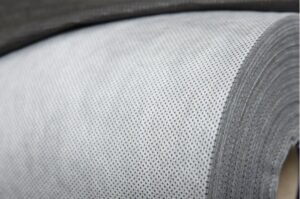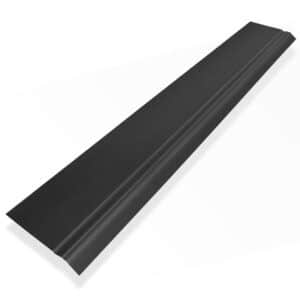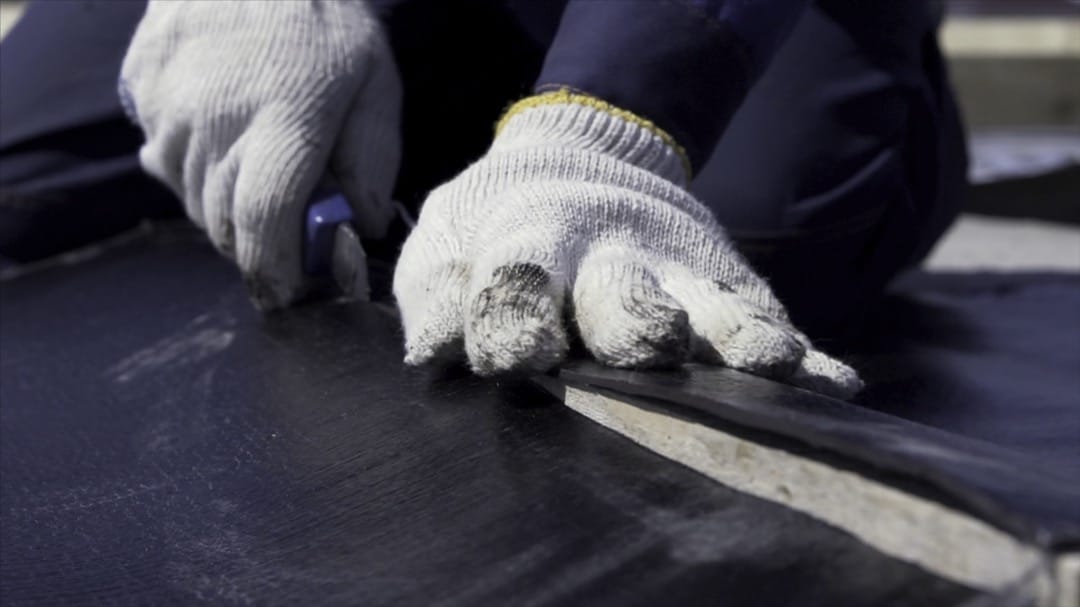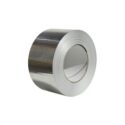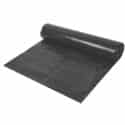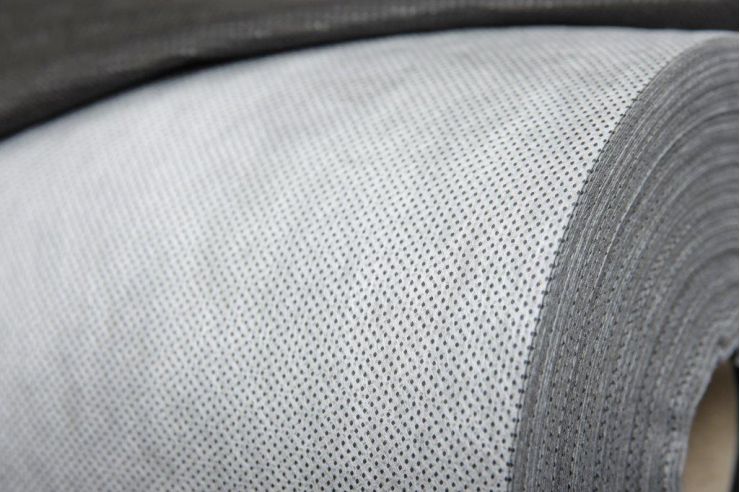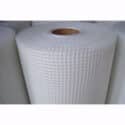18 Mar 2024
Essential Guide to Roofers Felt Installation
Roofing felt, also known as roof felt, is a crucial component in the construction and maintenance of roofs. It serves as a protective layer and acts as a waterproofing barrier. Understanding the different types of roofer's felt available in the market, the benefits of installing it, and the proper installation guidelines is essential for ensuring a durable and long-lasting shed roof.

Key Highlights
- Roofing felt, also known as roof felt, is a component in waterproofing and protecting roofs.
- Understanding the different types of roofer’s felt is essential for selecting the right one for your project.
- Installation guidelines for roofer’s felt include preparing the roof deck and following a step-by-step process.
- Roofer’s felt offers benefits such as waterproofing and leak prevention, as well as thermal insulation and energy efficiency.
- It is important to regularly inspect and maintain roofer’s felt to extend its lifespan and prevent damage.
- Budgeting for roofer’s felt installation involves assessing material costs, labor expenses, and considering long-term savings and warranty coverage.
Introduction
In this comprehensive guide, we will explore the world of roofer’s felt and provide you with all the information you need to know about its installation. We will cover topics such as the role of roofer’s felt in roofing systems, the types of roofer’s felt available in the UK market, the benefits of installing roofer’s felt, guidelines for its installation, and tips for maintenance and care. Additionally, we will discuss budgeting for roofer’s felt installation and compare different brands and quality standards. To get started on your roofer’s felt installation, contact our knowledgeable and experienced roofing team today.
Whether you are a homeowner, a contractor, or a DIY enthusiast, this guide will equip you with the knowledge and understanding to make informed decisions about roofer’s felt installation. So, let’s dive in and explore the essential aspects of roofer’s felt installation.
Understanding Roofer’s Felt and Its Importance
When it comes to roofing systems, roofer’s felt plays a crucial role in providing protection and waterproofing. Also known as roofing felt or roof felt, it is a flexible and durable material that is applied as an underlayment between the roof deck and the final roofing material. Its main purpose is to create a waterproof barrier that prevents water from seeping into the roof structure, making it an essential component for the proper installation of roof tiles.
What is Roofer’s Felt?
Roofer’s felt, also known as roofing felt or underlayment, is a protective layer installed underneath roofing materials. It serves as a barrier against moisture and provides an additional layer of insulation. Roofer’s felt plays a crucial role in enhancing the durability and longevity of roofing systems.
The Role of Roofer’s Felt in Roofing Systems
Roofing felt plays a pivotal role in roofing systems, acting as a protective barrier against water infiltration and providing an additional layer of insulation. It serves as a crucial underlayment for various roofing materials, ensuring the longevity and durability of the roof structure. Additionally, roofing felt helps in preventing leaks and moisture buildup, contributing to the overall integrity and efficiency of the roofing system. Its installation is essential for maintaining a well-functioning and secure roof for both residential and commercial buildings.
Types of Roofer’s Felt Available in the UK Market
In the UK market, there are various types of roofer’s felt available for different roofing needs. Two common options include traditional organic felt and fiberglass reinforced felt. Additionally, advancements in synthetic underlayment have introduced more durable and versatile options. These materials vary in composition, durability, and cost, catering to a wide range of roofing requirements. It’s essential to assess the specific needs of your project before selecting the most suitable roofer’s felt, such as green shed roof felt, for optimal performance and longevity.
Traditional Organic Felt vs Fiberglass Reinforced Felt
Traditional organic felt and fiberglass reinforced felt are two common options for roofing underlayment. Organic felt, made from natural materials like wood cellulose, offers good water resistance. In contrast, fiberglass reinforced felt, with added fiberglass for strength, provides enhanced durability and stability. The choice between them often depends on factors like cost, climate, and project requirements. It is important to weigh the benefits of each type before deciding on the most suitable option for your roofing project.
Benefits of Installing Roofer’s Felt
Roofing felt brings essential benefits to any roofing system. It provides waterproofing to prevent leaks, crucial for maintaining the structural integrity of buildings. Moreover, it enhances thermal insulation, promoting energy efficiency by reducing heat loss. These features make it a valuable investment for long-term protection against elemental wear and tear, ensuring a durable and reliable roofing solution. Professional installation of roofer’s felt can significantly extend the lifespan of your roof while adding value to your property.
Waterproofing and Leak Prevention
Roofers felt plays a crucial role in waterproofing and preventing leaks in roofing systems. By acting as a protective barrier between the roof deck and external elements, it helps in safeguarding the structure from water intrusion. Proper installation of roofing felt ensures enhanced protection against leaks, especially in areas prone to heavy rainfall or snow accumulation. This crucial step significantly contributes to the longevity and durability of the roof, making it an essential component of any roofing project.
Enhancing Thermal Insulation and Energy Efficiency
Roofer’s felt plays a crucial role in enhancing thermal insulation and energy efficiency within roofing systems. By providing an additional layer of insulation, roofing felt helps in regulating temperature fluctuations, reducing heat loss during colder months, and improving energy efficiency by minimizing the need for continuous heating or cooling. This results in a more comfortable indoor environment while also contributing to cost savings on energy bills. Additionally, improved thermal insulation helps in maintaining a consistent temperature within habitable buildings, ensuring optimal living conditions year-round.
Installation Guidelines for Roofer’s Felt
Prepare the roof deck adequately before commencing the installation of roofer’s felt. Follow a systematic step-by-step process to ensure proper placement and adherence of the underlayment. This includes accurately positioning and securing the roofing felt to prevent slippage or any irregularities. By following these guidelines meticulously, you can ensure a durable and effective installation that provides reliable waterproofing and protection for your roofing system. Taking the time to correctly install roofer’s felt is essential for the long-term performance of your roof.
Preparing the Roof Deck
Proper preparation of the roof deck is crucial before installing roofers felt. Ensure the deck is clean, dry, and free from any debris. Check for any damage or decay that needs repair to provide a sturdy base for the underlayment. Inspect the deck for protruding nails or sharp objects that could puncture the roofing felt. Additionally, make sure the deck is well-ventilated to prevent moisture build-up that can affect the durability of the roofing system.
Step-by-Step Installation Process
Ensure a clean, dry roof deck. Start the roofing felt installation from the bottom, working upwards. Overlap each layer for proper waterproofing. Secure with clout nails or staples. Trim excess felt neatly around edges for a clean finish. Roll and press the felt to avoid air bubbles. Apply high quality adhesive as needed to secure the felt firmly in place. Use a durable underlay as the base for a strong and flawless application. Regularly inspect for any loose areas or damage post-installation.
Selecting the Right Roofer’s Felt for Your Project
When choosing the appropriate roofer’s felt, factors such as durability, weather resistance, and compatibility with local climate conditions must be carefully considered. Assessing the suitability of materials in terms of thickness, composition, and fire resistance properties is crucial for a successful roofing project.
Durability and Weather Resistance Considerations
When selecting roofing felt for your project, considering durability and weather resistance is crucial. Factors such as material composition, thickness, and overall quality play a significant role in the longevity of the roofing system. Look for options with high durability against harsh weather conditions like wind, rain, and snow, ensuring the longevity of your roof. Opting for weather-resistant and excellent value roofing felt will provide long-term protection for your property, reducing maintenance costs and enhancing the overall efficiency of your roof.
Matching Roofer’s Felt with Local Climate Conditions
When selecting roofer’s felt, considering local climate conditions is paramount for optimal performance. In colder regions, a thicker and more insulating felt is recommended to enhance energy efficiency. Conversely, in warmer climates, breathable and reflective felts can help regulate temperature and prevent moisture buildup. Understanding how different types of roofing materials interact with specific weather patterns ensures longevity and protection for your property. Properly matching roofer’s felt with the local climate conditions is key to a successful and durable roofing system.
Maintenance and Care for Roofer’s Felt
Regular inspection of roofer’s felt is crucial for damage prevention. Extend its lifespan through proactive care. Implement tips like timely repairs to avoid costly replacements.
Regular Inspection and Damage Prevention
Regular inspection and maintenance are crucial for preserving the integrity of your roofing felt. Periodically check for any signs of wear, tears, or water damage. Addressing small issues promptly can prevent larger problems in the future. Avoid walking on the felt unnecessarily to minimize the risk of damage. Keep nearby trees trimmed to prevent branches from rubbing and causing tears. By implementing a routine inspection schedule, you can extend the lifespan of your roofing felt and ensure the continued protection of your roof.
Tips for Extending the Lifespan of Roofer’s Felt
Regularly inspecting the roofer’s felt for any signs of damage, such as tears or wear, can significantly prolong its lifespan. Clearing debris and ensuring proper drainage on the roof helps prevent water buildup that can deteriorate the felt. Avoid walking on the felt unnecessarily to prevent unnecessary stress and damage. In extreme weather conditions, promptly check for any issues and address them to prevent further damage and ensure the longevity of the roofer’s felt.
Conclusion
In conclusion, understanding the significance of roofer’s felt in roofing systems is crucial for a successful installation process. Whether you opt for traditional organic felt or advanced synthetic underlayment, ensuring waterproofing, thermal insulation, and energy efficiency is key. Proper maintenance, regular inspections, and selecting the right type based on durability and local climate conditions are essential for longevity. Budgeting wisely by considering initial costs, long-term savings, and quality standards will result in a durable and cost-effective roofing solution. By following the installation guidelines and avoiding common mistakes, you can enhance the longevity and performance of your roof with the right roofer’s felt choice.
Frequently Asked Questions
How long does roofer’s felt last under a roof?
The lifespan of roofer’s felt can vary depending on various factors such as the quality of the material, installation techniques, and climate conditions. On average, roofer’s felt can last between 15 to 30 years under a roof. Proper installation, regular maintenance, and choosing high-quality materials can help extend its lifespan. Consult with professionals for specific recommendations based on your roofing project, whether it’s for breathable roofs, summerhouses, or shingle installations.
Can roofer’s felt be installed in wet conditions?
Roofer’s felt should not be installed in wet conditions as it may lead to poor adhesion and performance. Moisture can compromise the effectiveness of the underlayment, impacting its ability to protect the roof. Installing in dry conditions is crucial for a successful application.
What are the common mistakes to avoid during installation?
During installation, common mistakes to avoid include improper roof deck preparation, inadequate overlapping of felt layers, and using incorrect fastening techniques. Neglecting weather conditions and failing to inspect for damage can also lead to issues.



